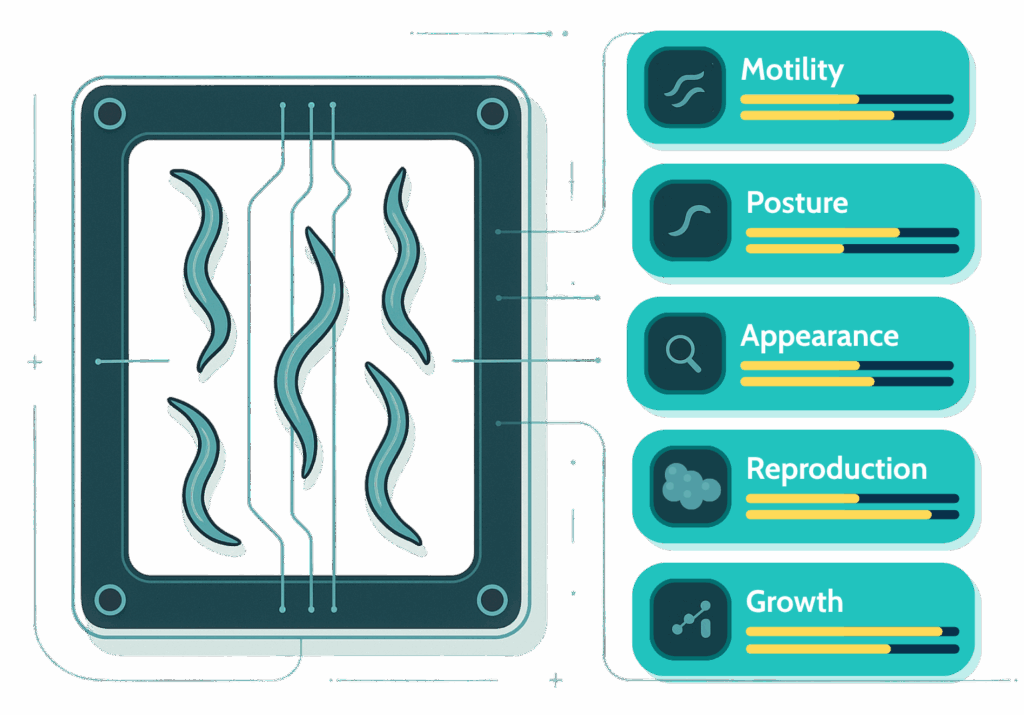Measuring biological age and unlocking health insights
When you hear “aging clocks”, you might think of tools for clinicians to assess patient health and guide anti-aging treatments. But in reality, aging clocks are far more versatile. They can also be engines for discovery and validation in research and development.
In the lab, aging clocks can tell us whether a new molecule, ingredient, or intervention truly impacts the biology of aging. This makes them invaluable for biotech R&D, nutraceutical development, and innovation in age-related diseases treatments. By providing measurable, reproducible biomarkers of biological age, aging clocks enable faster discovery, mechanistic validation, and evidence-based claims for final products.
In this post, we’ll explore how different types of aging clocks — from epigenetic signatures to functional organism-based models — are reshaping innovation pipelines. Ready to dive in?
What are Aging Clocks? Beyond Clinical Tools
Chronological age is just a number, but biological age tells a deeper story about health, resilience, and disease risk. Aging clocks estimate biological age by analyzing measurable biomarkers such as DNA methylation, protein expression, metabolic profiles, or whole-organism performance. Unlike chronological age, biological age reflects real-time health and resilience—and, crucially, how these are affected by interventions.
Unlike the fixed tick of chronological time, biological age can be influenced by lifestyle, genetics, environment, and interventions. That’s why aging clocks are becoming essential tools in longevity research and precision health.
While often applied in clinical or wellness settings, their greatest untapped potential lies in early-stage R&D:
- In Biotech and Pharma: Rapidly screen candidate molecules for geroprotective or disease-modifying effects.
- In Nutraceuticals development: Validate the specific longevity benefits of natural ingredients, vitamins, and probiotics, as well as their effect on healthy aging markers.
- In Cosmetics: Provide validated scientific evidence for anti-aging product claims by linking interventions to measurable biological rejuvenation.
The different types of Aging Clocks
Epigenetic Aging Clocks
Among the most famous are DNA methylation clocks (e.g., Horvath clock). These rely on predictable changes in methylation patterns across the genome. Epigenetic clocks are powerful predictors of mortality risk, disease susceptibility, and the effectiveness of anti-aging interventions.
Transcriptomic and Proteomic Clocks
RNA expression and protein abundance can also be used to build aging clocks. These provide insight into active cellular processes and stress responses, making them useful for tracking how interventions affect aging pathways.
Metabolomic and Microbiome-Based Clocks
Metabolic changes and gut microbiome composition shift dramatically with age. By analysing these profiles, researchers can estimate biological age and identify lifestyle factors that accelerate or slow aging.
Functional and Organismal Clocks
Sometimes, the best indicators of aging are seen in whole-organism performance, like mobility, stress resistance, or reproduction. Models like C. elegans have highly conserved aging pathways, and they offer rapid insights into how interventions shift biological age markers.
Why do Aging Clocks matter?
Aging clocks are more than academic curiosities. They are tools to:
- Evaluate interventions: Do caloric restriction, senolytics, or new compounds actually slow biological aging? This interventions often can also provide clarity in discovery pipelines by using Aging Clocks.
- Enable personalized medicine: Biological age tracking can guide preventive healthcare and lifestyle decisions.
- Support translational research: By linking molecular markers to functional outcomes, aging clocks bridge the gap between lab and clinic.
How Aging Clocks accelerate discovery pipelines
Screening Molecules and Ingredients
Aging clocks make it possible to test whether a new drug candidate or bioactive ingredient truly slows or reverses biological aging. Epigenetic and proteomic clocks provide fast molecular readouts, while functional organismal clocks capture whole-body impact, from stress resilience to motility.
Validating Mechanisms of Action
Different clocks can reveal how an intervention works: does it affect DNA methylation, mitochondrial metabolism, or stress resistance pathways? By correlating intervention effects with conserved aging mechanisms (mTOR, insulin/IGF-1, NRF2), researchers can strengthen both scientific rationale and IP claims.
Translating Lab Insights into Product Claims
For companies developing nutraceuticals, supplements, or ingredients, the question is: can we prove this intervention slows aging? And if yes, which aspect?
Aging clocks enable exactly that: turning abstract healthspan claims into measurable biological evidence. For instance, showing that an ingredient lowers biological age by several months (per epigenetic clocks) or enhances stress resilience (per organismal models) provides robust, data-backed claims for approval and consumer trust.
R&D advantage
Prioritize hits early and cut down on costly, time-consuming, and ethically challenged mammalian pre-clinical studies.
R&D advantage
De-risk pipeline decisions with mechanistic data.
R&D advantage
Generate validated, defensible product claims backed by science.
Enter Nagi™ B‑Age: A living Biological Age platform
At Nagi Bioscience, we decided to take the concept of aging clocks one step further to serve the needs of our customers developing healthy aging interventions.
This was the first step to what today is Nagi™ B-Age: in vivo biological age measurements designed to analyse aging dynamically, fast, and at scale.
Nagi™ B-Age uses an AI-powered algorithm to quantify the biological age of C. elegans by analysing over 20 proprietary phenotypic biomarkers across five vital traits: Motility, Posture, Appearance, Reproduction, and Growth. Integrated with the SydLab™ One microfluidic platform, it empowers you to evaluate the efficacy of interventions with unmatched speed, resolution, and reproducibility. All automated.

This provides scientists with:
- Faster compound screening and efficacy evaluation
- Aging patterns detection beyond survival
- Mechanistic clarity by measuring biological age and understand how each intervention shifts energy across vital functions.
- Validate and add health claims
- In vivo relevance with in vitro convenience
Nagi™ B-Age doesn’t just measure aging; it transforms how we test and validate interventions for longevity and healthy aging. Take a look at some data below:

Insights on biological age reduction
Metformin significantly improves motility by 4.4% and reduced biological age above 10% in just 10 days.
Ready to see Nagi™ B-Age in action on your longevity interventions?
Experience how biological age quantification can transform your pipeline. Join leaders in longevity science leveraging Nagi™ B-Age to prioritize interventions, reduce time-to-insight, add and substantiate claim, and publish with confidence.